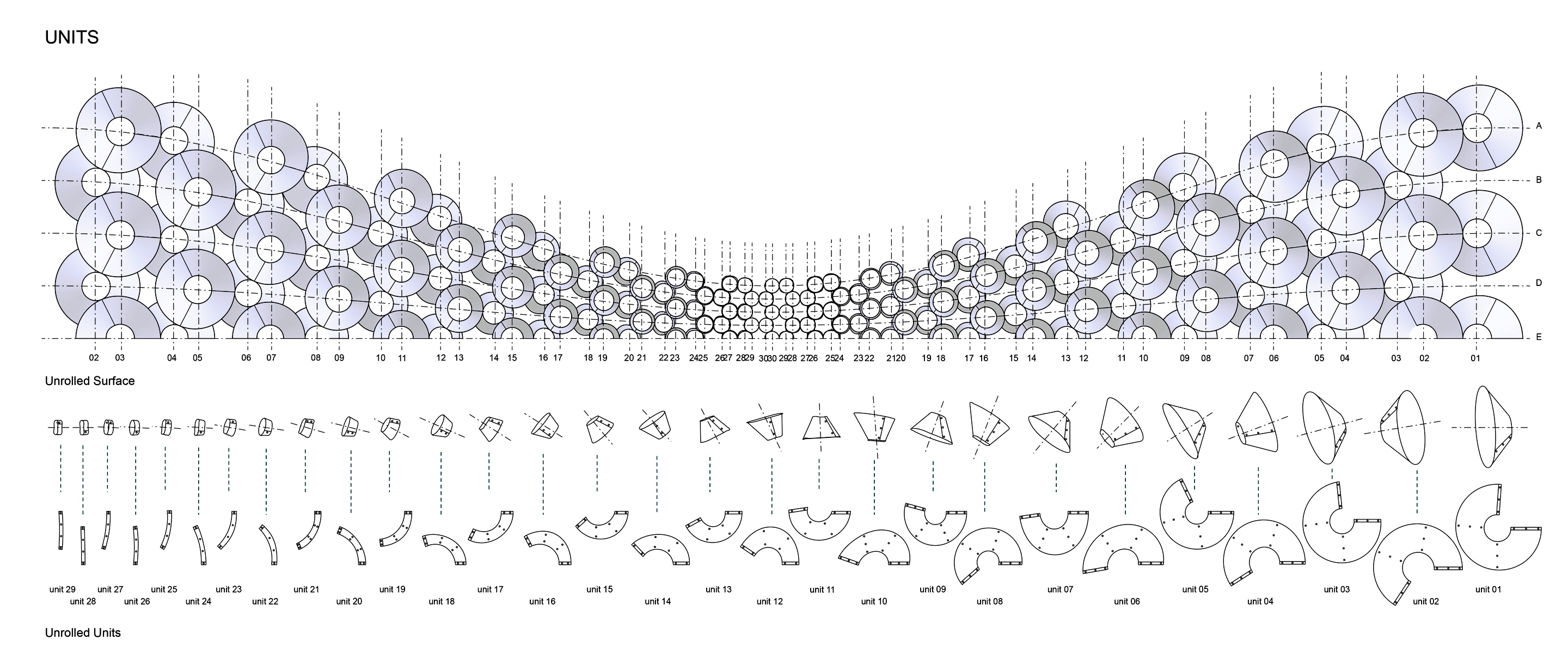Having taken an architecture course about computation fabrication (Fundamentals of Computational Design), I have some familiarity in this field. After researching a few examples, HG’s Opening Chronometry interested me. In the class I took, I created many parametric pavilions similar to that of HG Architecture’s. The process is essentially translating a shell into a larger shell — placing double-layered cones into a mathematical pattern created using Grasshopper.
(above) Grasshopper-created parametric system of units to assemble a pavilion.
It is interesting to think how a small-scale structure built using simple units can potentially be transformed into a large-scale home or building using a modular system. Parametric systems use a strict logic to create its design; however, this logic can be flexibly manipulated into visually different forms for different purposes as well. Computational fabrication can also be used to help build cheap, sustainable and easy-to-assemble homes, as well as speed up the process and lessen the effort placed into the whole process of construction.
![[OLD FALL 2018] 15-104 • Introduction to Computing for Creative Practice](https://courses.ideate.cmu.edu/15-104/f2018/wp-content/uploads/2020/08/stop-banner.png)